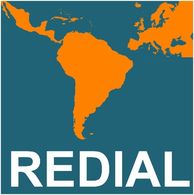Guadeloupe and Haiti's coffee genetic resources reflect the crop's regional and global history
Résumé
Societal Impact Statement:
Despite strong historical declines, Guadeloupe and Haiti's coffee sectors remain important to rural communities' livelihood and resilience. Coffee also holds value as part of the islands' historical legacy and cultural identities. Furthermore, it is often grown in agroforestry systems providing important ecosystem services, which will become more important as these vulnerable islands work to adapt to a changing climate. Current efforts to revitalize coffee farms and target strategically important specialty markets would benefit from understanding existing genetic resources and the historical factors that shaped them. Our study reveals the rich history reflected in current coffee stands on the islands.
Summary:
. The West Indies, particularly former French colonies like Haiti and Guadeloupe, were central to the spread of coffee in the Americas. The histories of these Islands are shared until the 19th century, where they diverged significantly. Still, both Islands experienced a strong decline in their coffee sector. Characterizing the genetic and varietal diversity of their coffee resources and understanding historical factors shaping them can help support revitalization efforts.
. To that end, we performed Kompetitve Allele-Specific PCR (KASP) genotyping of 80 informative single nucleotide polymorphism (SNP) markers on field samples from across main coffee-growing region of Guadeloupe, and two historically important ones in Haiti, as well as 146 reference accessions from international collections. We also compared bioclimatic variables from sampled geographic areas and searched for historical determinants of present coffee resources.
. At least five Coffea arabica varietal groups were found in Haiti, versus two in Guadeloupe, with admixed individuals in both. The traditional Typica variety is still present in both islands, growing across a variety of climatic environments. We also found Coffea canephora on both islands, with multiple likely origins, and identified C. liberica var. liberica in Guadeloupe.
. These differences are explained by the Islands' respective histories. Overall, Guadeloupe experienced fewer, but older introductions of non-Typica coffee. By contrast, several recent introductions have taken place in Haiti, driven by local and global factors and reflecting the history of Arabica varietal development and spread. Diversity on these islands is dynamic, and our results reveal opportunities and limits to the future of Guadeloupean and Haitian coffee.
Fichier principal
 Plants People Planet - 2024 - Millet - Guadeloupe and Haiti s coffee genetic resources reflect the crop s regional and.pdf (6.99 Mo)
Télécharger le fichier
Plants People Planet - 2024 - Millet - Guadeloupe and Haiti s coffee genetic resources reflect the crop s regional and.pdf (6.99 Mo)
Télécharger le fichier
| Origine | Fichiers éditeurs autorisés sur une archive ouverte |
|---|---|
| licence |




